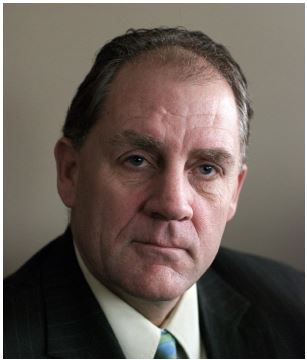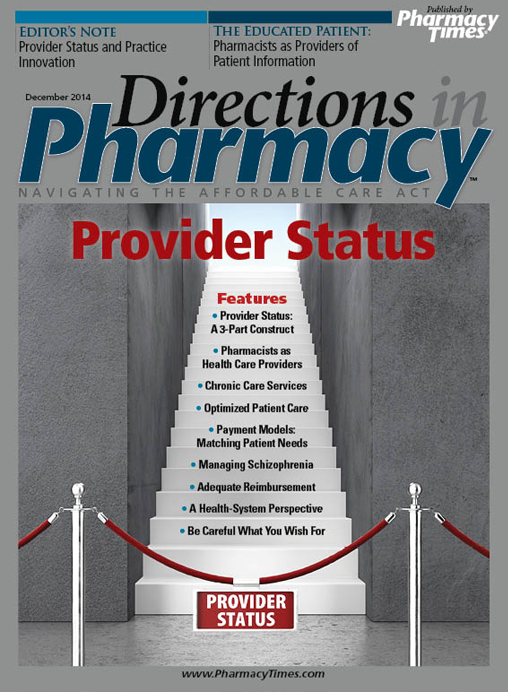Publication
Article
Pharmacy Practice in Focus: Oncology
Be Careful What You Wish For
Author(s):
Expectations will be high for pharmacists responsible for comprehensive medication therapy and patient outcomes.

Expectations will be high for pharmacists responsible for comprehensive medication therapy and patient outcomes.
The purpose of this opinion article is to place the issue of pharmacist provider status in the context of national efforts to redesign health care delivery and financing. First of all, pharmacy is one of the last health professions to come to the table seeking fee-for-service reimbursement for professional services. Fortunately, feefor- service financing with no link to quality will soon be a distant memory. It can be argued that traditional fee-for-service reimbursement has unwittingly contributed to drug-related morbidity and mortality by rewarding providers and health systems when patients predictably experience the ineffective and unfortunate consequences of a dysfunctional medication use system. The Centers for Medicare & Medicaid Services (CMS) has clearly articulated the 4 payment categories on the way to achieving national aims of better care and better health at lower costs.1 The 4 payment categories are:
Category 1: Fee for service—no link to quality
Category 2: Fee for service—link to quality
Category 3: Alternative payment models built on fee-for-service architecture
Category 4: Population-based payment
This long overdue shift toward rewarding providers for keeping patients healthy is good news for individuals who take medications, as we build accountable medication-use systems based on the way patients take medications in homes across America.
It is interesting to note that more than 20 years of professionwide studies demonstrating that pharmacists save money and improve care as justification for feefor- service reimbursement may actually have a beneficial side effect in the CMS vision for global, population-based financing. Every health profession is now being held accountable for contributions toward our 3-part national aim of improving care, improving health, and reducing costs. Think about it this way: have physicians needed to demonstrate that they save money before being paid for the care they deliver? Of course not. Although the profession of pharmacy has carried this burden for many years, results consistently demonstrating improved clinical outcomes with favorable return on investment are now posing an opportunity for pharmacists to be included in fee-forvalue and global health care payments.
Which brings us to the thesis of this op-ed article, “Provider Status: Be Careful What You Wish For.” There may be a general belief that gaining provider status through legislation is a panacea for pharmacists. However, securing provider status is one thing, but obtaining reimbursement for care is another matter. In Minnesota, the profession of pharmacy skipped over provider status legislation and went straight to legislation appropriating payment for medication therapy management services.2
There is one other extremely important reason to be careful what you wish for. Once pharmacists gain provider status, service-level expectations for those conducting complete and comprehensive medication management to assess a patient’s drug-related needs will be very high.3 It has taken a very long time for pharmacy to justify its position commensurate with other health professions. To maintain confidence among health care peers and patients, we must strive to exceed expectations for comprehensive medication management at every patient encounter.
The accountable use of medications demands that pharmacists practice at the top of their skills and abilities to assume responsibility for a patient’s drug therapy outcomes. Holding a patient’s life in your hands is serious business. You must be prepared to accept this significant responsibility by asking yourself if you are ready and able to exceed service-level expectations for comprehensive medication management at every patient encounter. There is a distinct possibility that the profession of pharmacy will be better off in shared savings models and fee-for-value reimbursement systems, if pharmacists prepare themselves to function effectively in high-performing health care teams. Stated another way, “Be careful what you wish for…you might just get it!”
Brian Isetts, PhD, BCPS, FAPhA, is a professor in the department of pharmaceutical care and health systems at the University of Minnesota College of Pharmacy. He has experience as a pharmaceutical care practitioner, nursing home consultant, and in community and institutional practice. He recently completed and two-and-a-half year sabbatical as a health policy fellow in the Centers for Medicare & Medicaid Services. Dr. Isetts earned his PhD in social and administrative pharmacy from the University of Minnesota.
References
- Rajkumar R, Conway PH, Tavenner M. CMS—engaging multiple payers in payment reform. JAMA. 2014;311(19);1967-1968.
- McInnis T, Webb E, Strand L. The Patient-Centered Medical Home: Integrating Comprehensive Medication Management to Optimize Patient Outcomes. 2nd ed. Washington, DC: Patient-Centered Primary Care Collaborative. June 2012. www.pcpcc.org/guide/patient-health-through-medication-management. Accessed October 26, 2014.
- Medication therapy management services (MTMS). Minnesota Department of Human Services website. www.dhs.state.mn.us/main/idcplg?IdcService=GET_DYNAMIC_CONVERSION&RevisionSelectionMethod=LatestReleased&dDocName=dhs16_136889. Revised May 1, 2014. Accessed July 21, 2014.







